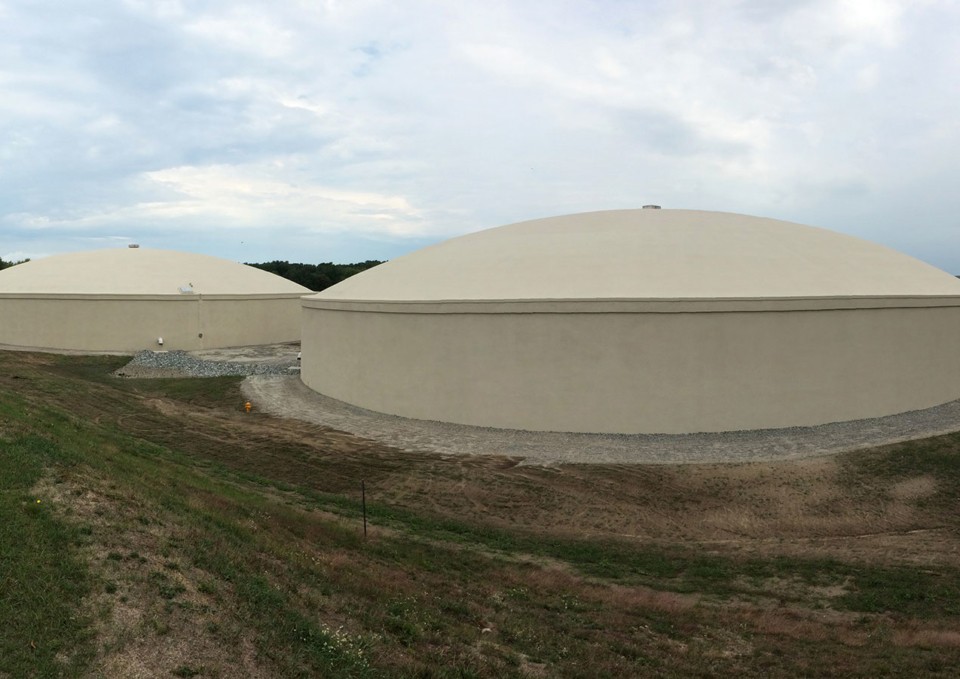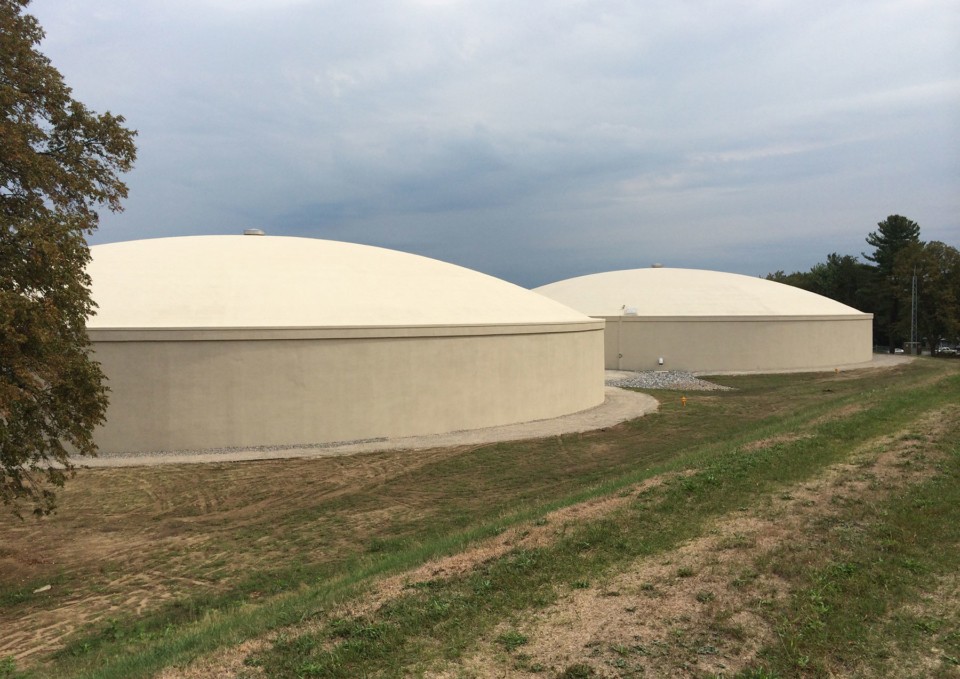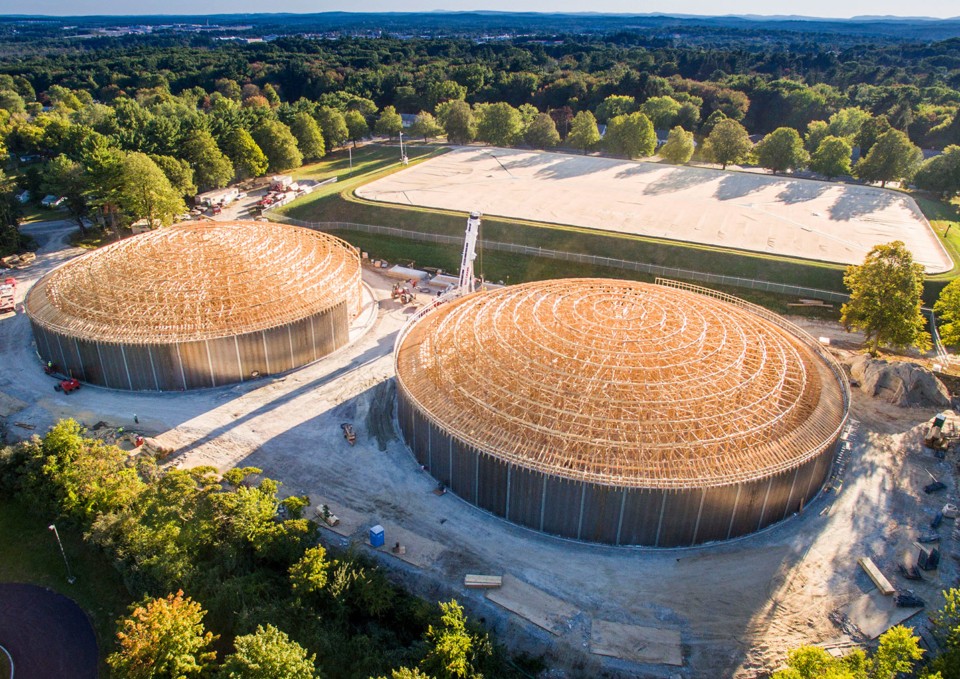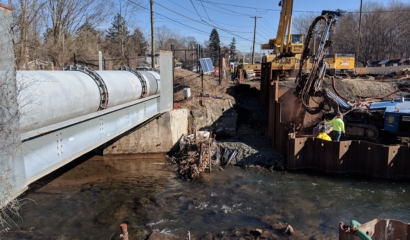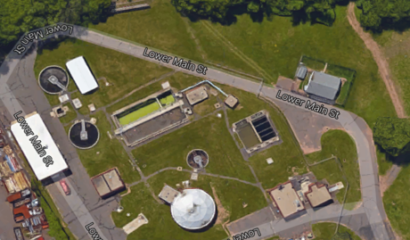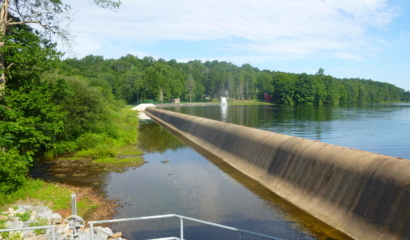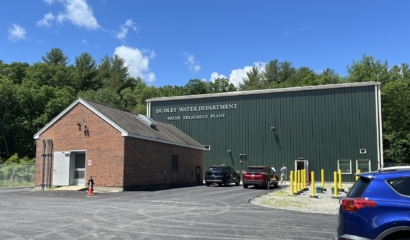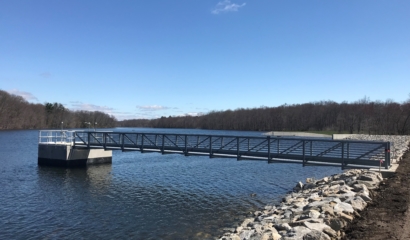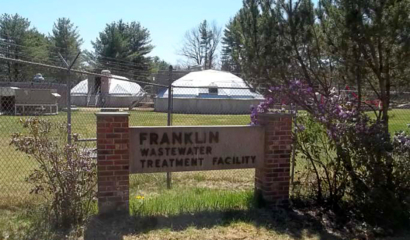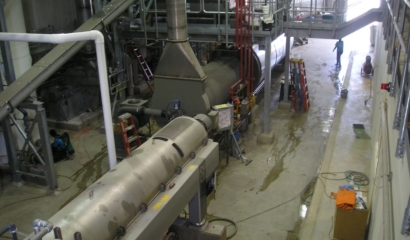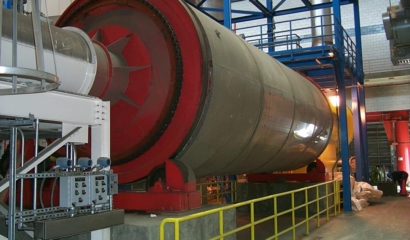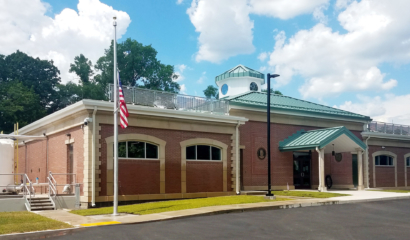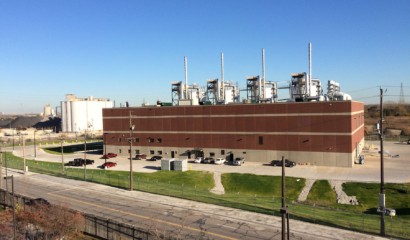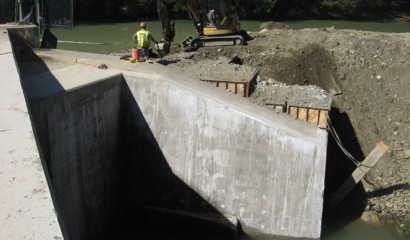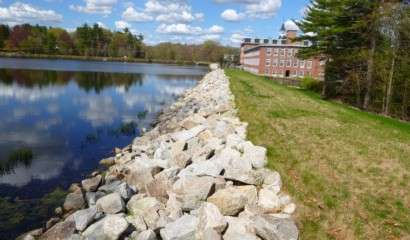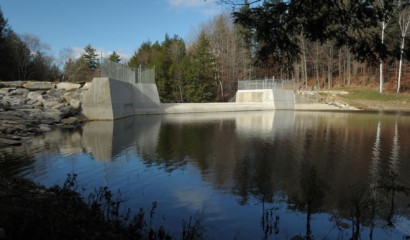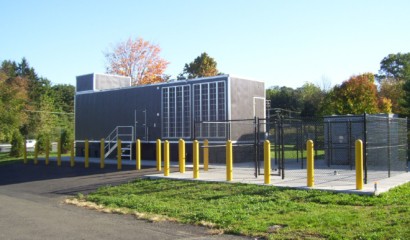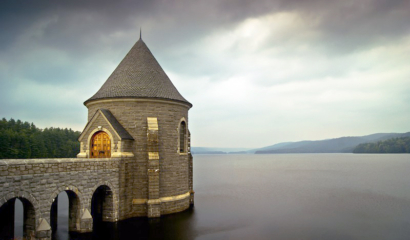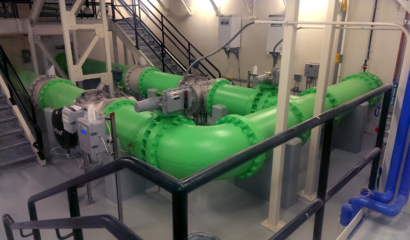Alternative Layout for Twin Tanks Offers Fast-Track Construction Schedule
The Manchester Water Works (MWW) holds the spot as New Hampshire’s largest water utility. It is committed to sound engineering, long term planning, and preventive maintenance to provide its customers with the highest quality drinking water, while minimizing the impact on water rates.
So when MWW’s low service 20 MG reservoir had clearly reached the end of its useful life, the town elected to replace the existing 20-million-gallon earthen berm reservoir with two new 50-foot tall 6.5-million-gallon (MG) wire-wound prestressed concrete water storage tanks. The goal of this fast tract construction project was to provide a safer and more secure water supply, as well as improve overall water quality.
Time & Cost Savings
We provided professional engineering services for the design and construction of the two new tanks. Realizing the possibility of significant cost savings for the MWW and a reduced schedule, we proposed an alternative layout for the two new tanks, which shortened the construction schedule by six months. It also reduced the engineering and construction cost by approximately $300,000, and lessened the construction impact on abutters.
The new tanks were constructed concurrently at the eastern edge of the existing reservoir property while the existing 20 MG Reservoir remained in service, minimizing the impacts of construction activities on the surrounding properties.
Improved Water Quality & Safety
In addition to the economic advantages, the two separate water storage tanks provide valuable redundancy allowing one tank to be taken out of service for maintenance while the other tank remains in service. Also, the twin tanks are also a more sanitary option than the previous reservoir. Both tanks also included interior passive mixing systems, reducing the amount chemicals needed for disinfection over the original reservoir. Other advantages include an innovative low-impact development (LID) design to sustainably manage stormwater runoff.
Neighborhood Aesthetics
Our team understood the design challenges associated with the construction of these new tanks that would change the existing neighborhood aesthetics. We knew that public presentations, outreach, and buy in from stakeholders would be an integral part of the design process. Raised landscaped berms and street trees were also constructed around the tanks to provide the surrounding properties with a visual buffer.
Services Snapshot
Our services included site/civil and geotechnical engineering, permitting and bidding, construction administration and observation, as well as stormwater management.


